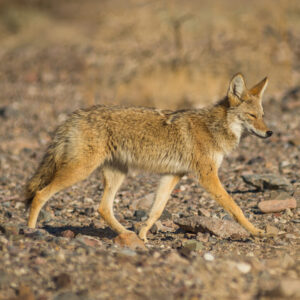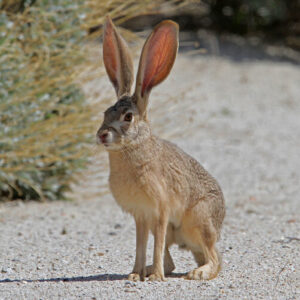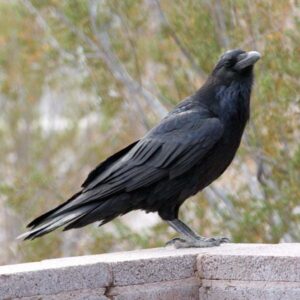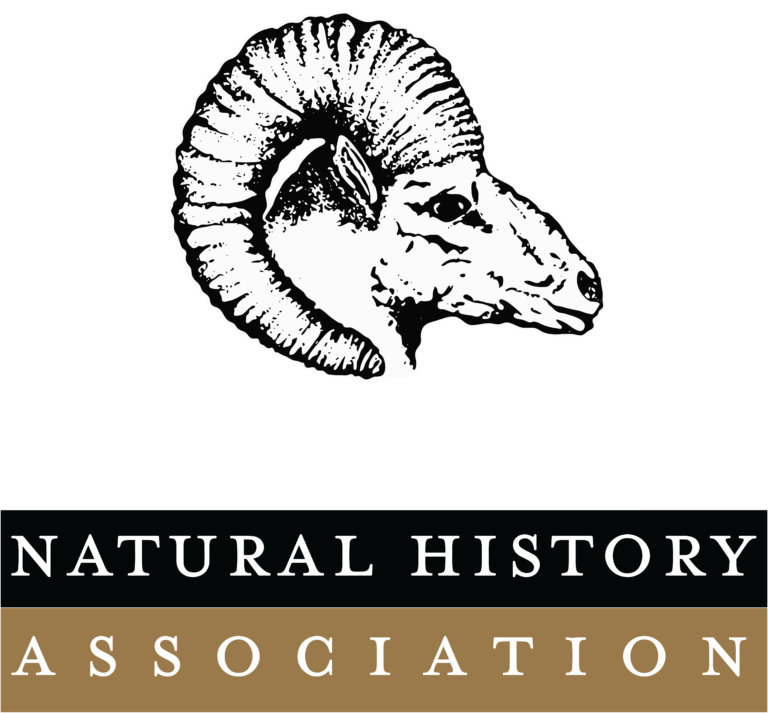Visitors are advised to keep a safe distance from all wildlife and to avoid approaching or feeding them in any way.

Chuckwalla (Sauromalus ater)
Chuckwallas are native to the southwestern United States, including Death Valley National Park. They are known for their distinctive appearance, including a stocky body, short legs, and rough, spiny skin often colored in shades of gray, brown, or black. In Death Valley NP, chuckwallas are typically found in rocky areas, where they can take shelter in crevices and bask in the sun on exposed rocks. They are primarily herbivorous and feed on various plant materials, including leaves, flowers, and fruits. Chuckwallas are known for their ability to inflate their bodies as a defense mechanism. When threatened, they will often wedge themselves into a crevice or hole in the rocks and inflate their bodies, making it difficult for predators to extract them.

Coyote (Canis latrans)
Coyotes are one of the most adaptable animals in North America and can thrive in a wide range of habitats, including deserts like the Death Valley region. Coyotes are typically most active at dawn and dusk, although they can also be seen during the day. Coyotes are adaptable, opportunistic feeders. They can adjust their diet to suit the resources available in their environment. For example, in the Death Valley region, where water and vegetation can be scarce, coyotes rely more heavily on small mammals, insects, and plants for food. While coyotes are generally not considered dangerous to humans, it is important to remember that they are wild animals and should be treated with respect. Visitors should never attempt to feed them or approach them too closely. Additionally, it is crucial to properly store food and trash to avoid attracting coyotes and other wildlife to campsites and picnic areas.

Black-Tailed Jackrabbit (Lepus californicus)
Black-Tailed Jackrabbits are known for their long ears and powerful hind legs. In the Death Valley area, jackrabbits are well adapted to the arid desert environment and can obtain much of their water from the plants they eat. They are herbivores and mainly eat grasses, shrubs, and other vegetation. Their long ears help them detect predators, while their powerful legs allow them to escape danger quickly. Jackrabbits are an important prey species for many predators in the park, including coyotes, bobcats, and birds of prey. Despite being a common sight, jackrabbits can be challenging to spot due to their excellent camouflage and tendency to freeze in place when they feel threatened.

Common Raven (Corvus corax)
Ravens are one of the world’s most intelligent bird species. They are highly social and form complex family groups, often living in large colonies or flocks. Ravens are known for their distinctive croaking call and sleek black feathers, sometimes with a purplish or bluish sheen in the sunlight. Ravens are often seen scavenging for food and eat a wide range of items, including decaying carcasses, insects, fruits, and seeds. They are known to be exceptionally skilled at finding and opening food containers. Visitors are advised to store food and trash properly to avoid attracting ravens and other wildlife to campsites and picnic areas.

Zebra-tailed Lizard (Callisaurus draconoides)
Zebra-tailed lizards are named for their distinctive black-and-white striped tails, resembling a zebra. In the Death Valley area, zebra-tailed lizards are typically found in open, sandy areas, where they can blend in with their surroundings and hunt for insects and other small prey. They are diurnal (active during the day) and are often seen basking in the sun on rocks or other warm surfaces. Zebra-tailed lizards are fast runners and can move quickly across the sand using a distinctive side-to-side motion. They can also change direction rapidly, which helps them evade predators.
